How to wean a kitten?
Weaning a kitten is the process of transitioning the kitten from mother's milk to solid food. This fun, messy adventure is meant to help a kitten transition from nursing (or bottle-feeding) to eating solid foods on their own!
It is an important part of kitten development, which must be done at the right time and in the right way. During this thorough process, kittens develop rapidly, going from a state of total dependence on their mother to social independence within a few weeks .

In an ideal scenario, the mother cat will take care of weaning the kitten alone. However, when it has difficulty producing milk, or when a litter of kittens is orphaned, intervention is necessary. Orphaned kittens will therefore rely on you for warmth, nutrition and socialization in the absence of their mother.
They will need extra support during this time to ensure they are receiving the right nutrients in appropriate amounts and to keep them on track for success and independence. Weaning is also an important step in the socialization of a young kitten. Here are some tips for smooth and successful kitten weaning.
Before starting the weaning process
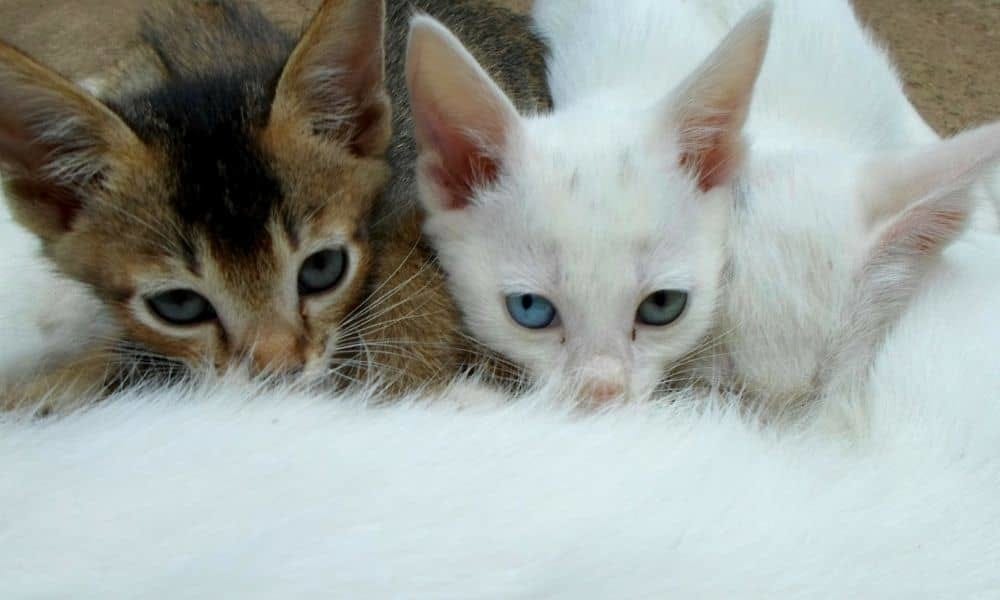
When possible, kittens should be exposed to mother's milk, especially during the first 12 to 24 hours of life. The first milk, or colostrum , contains antibodies that the kitten can only absorb during this period.
If a cat has a very large litter of kittens and cannot produce enough milk, each kitten will still need to get some of her milk. If she cannot produce milk due to mastitis or some other problem, another nursing mother may accept the kittens if they are close to the size of her own.

If a nursing cat is not available, you can feed kitten milk replacement formula with a bottle or syringe. In an emergency, it is recommended to mix one cup of whole milk, one egg yolk, one drop of liquid multivitamin and three Tums, an antacid medication, in a blender; but be careful, this should strictly remain for temporary use to feed the kittens, and it will be necessary to switch to formula as soon as possible.
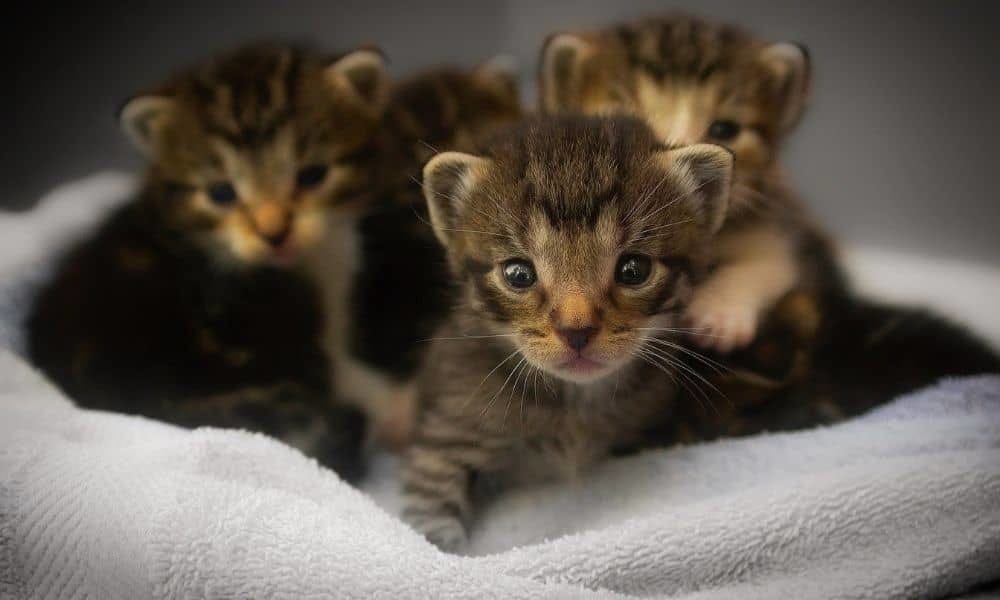
Then, it will be necessary to bottle feed the kittens for three to four weeks. Always warm the bottle in a cup of hot water and taste it yourself to check the temperature and that it has not gone sour. If using a powder formula, store the powder unmixed in the freezer.
Feed the kitten slowly but frequently: every two to three hours during the day. At night, don't worry; he will wake you up when he is hungry. If he sleeps, let him sleep and do the same.
When is the time to wean a kitten?

A kitten's body is very sensitive to premature weaning, so be careful not to start it too early. A kitten 0 to 5 weeks old should be breastfed or bottle-fed. Normally, the kitten weaning process begins around four weeks of age.
Before four weeks, kittens are considered newborns and may not be ready to be weaned on milk. But if you're weaning an orphaned kitten, you can start a little earlier, between three and four weeks, if the kitten shows signs of readiness. Keep a close eye on your kitten to make sure she gets enough food.
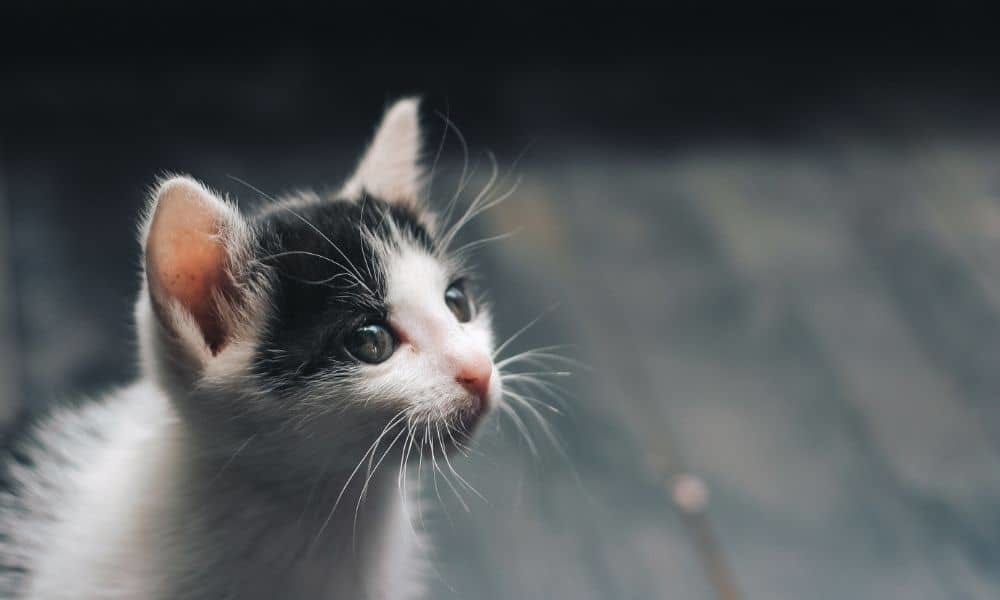
When your kitten is ready to be weaned, you may notice that she will have become more mobile and will be able to stand up while holding her tail. If your kitten is unable to stand, play, or focus its eyes, it is too early to start weaning.
Around 5 weeks of age , the kitten's premolars will begin to emerge, indicating that he is likely ready to try meat foods. He will also have his canines and incisors and should explore his surroundings while playing. So when your kitten starts biting and chewing on the bottle , she will be ready. At this point you can start introducing kitten food.

However, some kittens may need a little more bottle time due to health issues or differences in weight or size. You will have to use common sense. So, if you notice any changes in the kitten's health or energy during this process, return to bottle feeding immediately.
How long does it take for a kitten to be weaned?
Most kittens take between four and six weeks to be weaned from the bottle or their mother. The weaning process is relatively brief: a typical kitten will be fully weaned when it is between eight and ten weeks old .
How should I start the weaning process?

To begin the weaning process, start by separating mother and kitten for a few hours at a time. This will gradually reduce the kitten's dependence on its mother and her milk. Mom and kitten should have their own special space, with a litter box, food and water.
As the kitten becomes more socialized and independent, it will be able to spend more time away until it is completely weaned.

Remember that removing a kitten from its mother too quickly can have negative consequences for mother and baby , such as aggression and other anxious behaviors. Kittens learn to play, eat, interact and use a litter box by observing their mother or another adult cat. Ideally, a weaned kitten should be left with its mother.
What food do I need to wean my kitten?
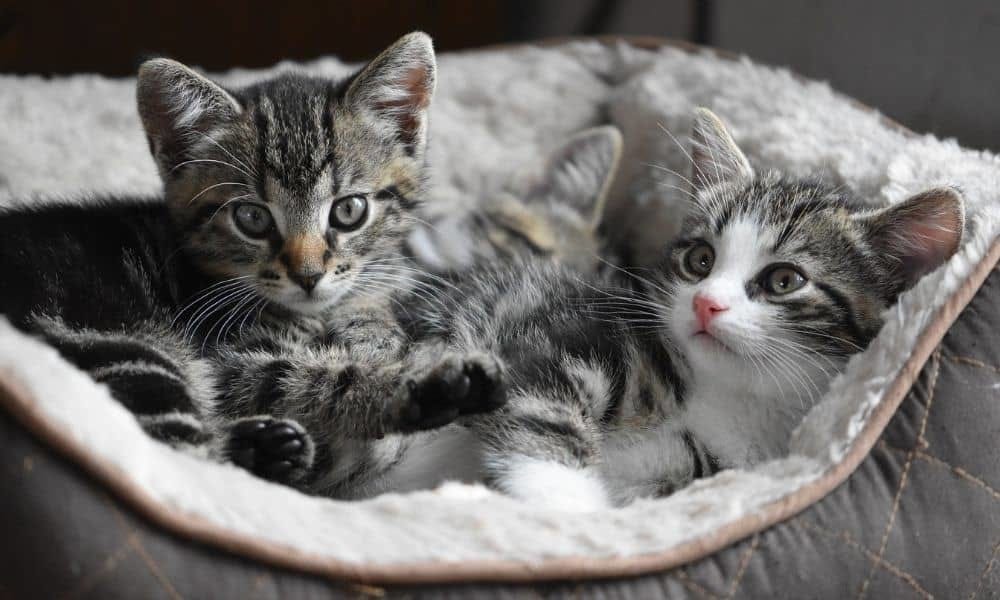
In order to start weaning your kitten, you will need to obtain wet food , making sure that it says “kitten” on the packaging. Wet kitten food is higher in calories, fat and protein, everything a kitten needs for healthy development.
So wet food is the healthiest choice for your kitten to start with, as the moisture content will help keep them healthy and hydrated. However, some kittens may prefer dry food , and that's okay, as long as you choose a healthy kibble for yours. It will also be necessary to use shallow food bowls so that the kitten can easily access the food.

How to feed a weaning kitten?
The most important rule of weaning is not to rush : do things according to the kitten's schedule, not yours! Try offering the kitten small bites of wet food on a finger, spoon, or tongue depressor and see if he will accept it.
If he is interested in eating, see if he can access food in a bowl. Remember that this is a new skill for him, so many kittens will have difficulty eating from a bowl the first few days. No precipitation !
You can mix the kitten food with the formula so that he recognizes the taste. Don't use cow's milk, which can cause stomach upset and diarrhea in some kittens. Instead, use kitten formula. Spread the mixture around his mouth with your finger and let him lick it off. Once he gets used to the taste, he will seek it elsewhere. The porridge you give your kitten (the mixture of formula and wet food) will greatly help him transition from one food to the other.

Then you can introduce him to lapping in a bowl. Supervise him and never push his face into the bowl , which could cause him to inhale the mixture and develop pneumonia.
You can also start by simply introducing a small teaspoon of wet food mixed with the formula, which will allow the kitten to become acclimated to the new proteins and flavors. As the kitten becomes more comfortable eating meat , you will begin to increase the ratio so that there is more wet food at each meal.
The next step is to adjust the ratio of formula to wet food until the mixture is mostly wet food. Then, mix the formula with dry food and repeat the process.

Between the fourth and sixth week , gradually transition from weaning to dry food, supplementing with formula if necessary. Use canned or dry kitten food mixed with water; at first, add plenty of water, then reduce the amount of water as the kitten grows.
Once the kitten has eaten solid foods, it is time to supplement the diet with a bottle (or allow it to continue nursing with mom, if the latter is present!).
Supplemental feeding ensures your kitten gets all the calories and nutrition she needs during this time. The transition should happen slowly , and if your kitten doesn't yet understand how to eat, you'll still need to take supplements to ensure she stays healthy and well-nourished.

When the kitten is still drinking formula, it will be important to burp it. Burp a weaned kitten by placing it on your shoulder or on its stomach and patting it gently. You may hear or feel him burping.
To encourage a kitten to move from bottle to bowl, dip your finger in the bowl and let the kitten lick the formula from your finger. Gradually lead your kitten toward the bowl, patiently, until he learns the process.
Wean completely and introduce water

Once the kitten is confidently eating on its own, you can stop additional feeding, it's time to completely switch to solid foods! Be sure to feed a high-quality formulated kitten food and monitor him to ensure there are no worrying changes in weight, behavior or condition.
At this time, water should also be introduced into a small, shallow bowl. Never give him access to a large bowl which can present a danger to the safety of a small kitten; keep your water bowl about 2 inches high. It's normal for your kitten to struggle with water at first, but she should drink confidently within 1-3 days of introducing the bowl.
A general timeline for weaning kittens might be as follows:

-
Weeks 4-5: Feed moist or moistened dry food mixed with formula to form a slush. Supplement with formula if the kitten isn't taking the new food, to ensure she gets enough calories.
-
Weeks 5-6: Weaned kittens should start nibbling kibble, lightly moistened with water.
-
Weeks 6-7: At this point, the kittens' weaning process is complete and they should be eating all solid foods by week seven.
Other kitten weaning tips
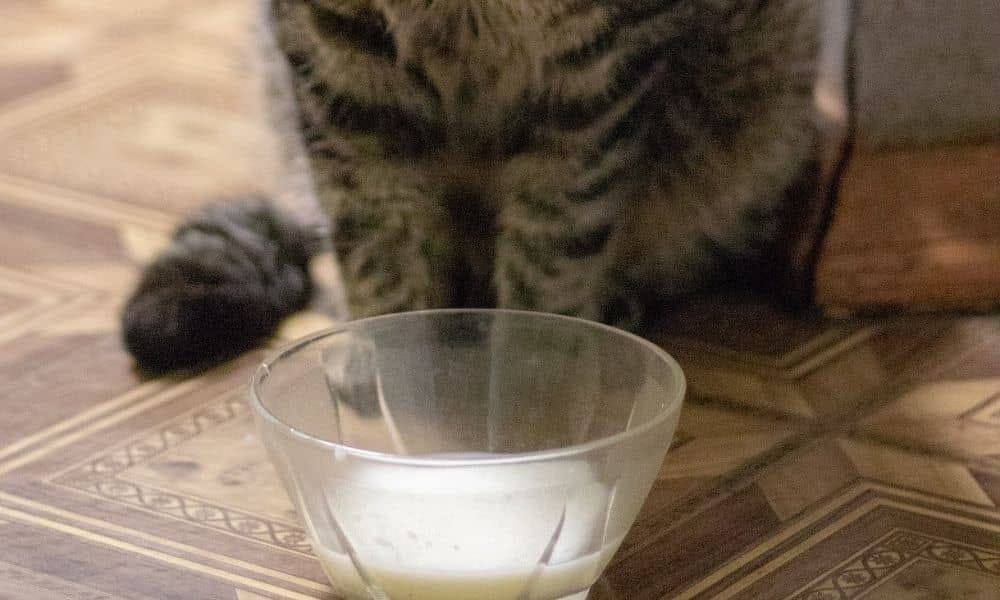
When weaning a kitten off solid food , it is important to use a food specifically designed for kittens. These formulas contain higher levels of calories, protein and calcium that growing kittens need.
If you are caring for a mother cat and her litter, it is normal for the mother cat to eat the same kitten food while she is nursing.
Although weaning can be difficult, remember that kittens are young animals. Don't be surprised if your kitten wants to get into the bowl, beat the pieces up, or knock over the saucer.
Play is a normal, healthy way for them to explore their surroundings, so be patient and don't rush the process. Things can get messy, so be sure to keep your kitten clean after each feeding.
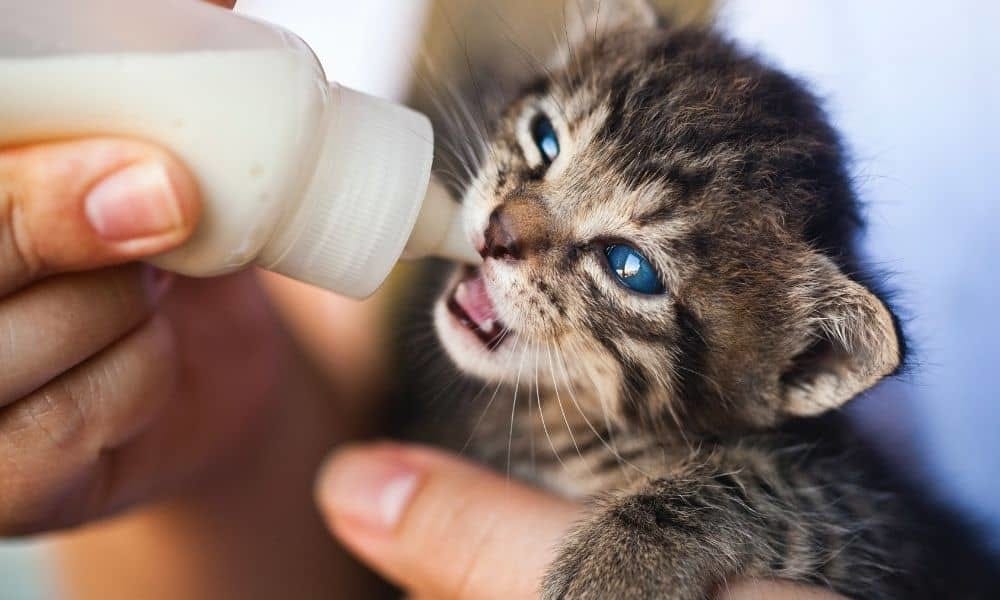
Remember to weigh the kitten throughout the weaning process. If his weight decreases or stabilizes, you will need to supplement with a bottle, try another method of eating, or switch back to kitten formula.
Finally, a weaning kitten must be kept warm. Build a nest by lining a high-sided box or pet carrier with towels. Also place a heating pad or hot water bottle under the towels on one half of the box. This will give him plenty of warmth, but also a place to cool down if he gets too hot.

Finally, keep in mind that weaning a kitten is a natural process, it may just need a little help from you. The key: a little patience and a lot of love.